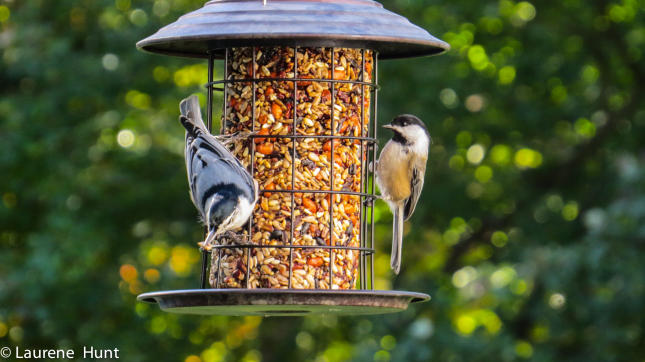
Birds Are Caching Food for the Winter!
For birds the biggest giveaway that autumn has arrived is the decrease in daylight hours. For many birds this means it’s time to get out of town and head south, but for birds that winter here like Tufted Titmice, Black-capped Chickadees, White-breasted Nuthatches, woodpeckers, Northern Cardinals, and Blue Jays, it means it’s time to stock up on food for the upcoming winter. This is also known as caching.
September through December is peak caching time for some of our favorite birds, and these birds can store anywhere from hundreds to thousands of separate caches scattered around their home ranges (our backyards and neighborhoods). Notice how birds are spending less time eating their seeds and nuts at your feeders and are instead making repeated visits where instead of hanging out and eating they quickly leave with their bounty. Some birds like Blue Jays may actually stay longer as they stuff their mouths with as many seeds or nuts as possible. A study found that Blue Jays can stuff up to 100 sunflower seeds in their mouths before setting off to hide them!
Chickadees, nuthatches, titmice and woodpeckers store their seeds and nuts under tree bark and knotholes; and even under roof shingles, house siding and eaves. Some birds hide seeds by covering them with leaves, moss or grass. Blue Jays often bury their cache in the ground. Birds also remember key landmarks such as rocks and shrubs that surround their cache locations.
Now here’s something truly amazing! Chickadee’s brains actually grow in the autumn to help them remember where they hid their caches of food! In the spring their brains shrink back. Kinda makes a person rethink what it means to be a “bird brain!”

